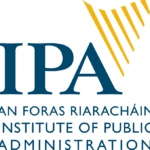Creating and maintaining a safe and healthy working environment is not just a practical requirement, but a legal one too. The Safety, Health and Welfare at Work Act 2005 sets out the main provisions for securing and improving the safety, health and welfare of people at work. The law applies to all places of work, irrespective of how many workers are employed.
For employers, this generally means designing, providing and maintaining a secure place of work that has safe access and egress; up-to-standard work equipment that poses no risk to the health of those using it; providing information, instruction, training and supervision on matters of Health and Safety to employees; providing access to first aid if required; having a strategy in place in case of accidents or emergencies.
For employees, on the other hand, good health and safety practice means compliance with rules that are in place; cooperation with colleagues with regards to Health and Safety issues; correct usage of work equipment and/or protective wear; participation in training as set out by the employer; and considered, responsible conduct.
What does it involve
Naturally, Health and Safety practices will differ between industries and workplaces for instance, the health and safety training that the workers on an oilrig receive will feature elements that would not be covered by the training given to the staff at a coffee house. However, there are certain core principles with which workers in all disciplines should be familiar.
Part-time Health and Safety courses are an excellent way of receiving up-to-date training in the central safety components relevant to most workplaces. Learners will gain a solid overview of the wide range of topics involved, such as legislation, accidents, hazards, ergonomics, manual handling, health promotion, emergency planning, fire prevention, safety signs, first aid and infection control. Participants on a diploma-level course in Health and Safety will learn how to identify the key elements of a health and safety management system as well as produce a relatively simple health and safety policy plan for a small business. Learners on such programmes are typically assessed through a combination of assignments and examination. Many shorter Health and Safety courses are also FETAC-certified.
Anyone whose employment requires moderate to intensive levels of physical labour will also benefit from a part-time Manual Handling course. These tend to be quite short often only a day or so long and are delivered by qualified instructors who will provide important training in injury prevention. This is achieved through teaching participants about the anatomy of skeleton and spine; flexibility and fitness; the principles of safe moving, handling and lifting; and in understanding the causes of injury and the limitations of the spine and muscular system.
Though prevention is certainly better than cure, accidents will, and do, happen. Part-time courses in Occupational First Aid will teach learners how to deal with unforeseen accidents and minor injuries. Many First Aid courses are FETAC-certified and learners will learn to coordinate first aid in the workplace in compliance with the requirements of the Safety, Health and Welfare at Work Regulations. Participants will also learn about patient assessment; respiratory emergencies; and cardiac first response. They will also be taught how to treat bleeding; muscular injuries; burns, scalds, chemical and electric shock.
Why do it
Poor health and safety practice can cost companies thousands of euros per year and can put employees out of work for week, months or possibly longer. Every workplace must therefore have someone who is trained in the latest health and safety work practices. The benefits of this are numerous: reduced risk for workers and threats of legal action for employers; reduced levels of absenteeism; fewer accidents; increased productivity resulting from higher standards of health; and improved reputation for corporate responsibility among investors, customers and communities. Because of these advantages, anyone with a Health and Safety qualification will appear more valuable to prospective employers.
What comes next
As mentioned above, all workplaces are required to have certain health and safety measures in place; therefore anyone with a qualification in health and safety will be at an advantage if seeking work in the areas of HR, management, or production. Graduates may also consider careers as health and safety officers.
At a glance
A part-time course in Health and Safety basics will typically run for around 3 months, although some are far shorter than this. Part-time options in Occupational First Aid can run for up to 3 months. Distance learning is another option for those who may have limited access to training centers. A course in Health and Safety Essentials comprises 6 hours learning.















